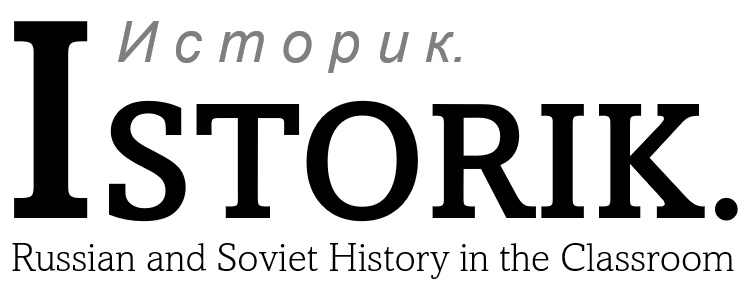There’s a very unscientific but revealing way of getting an overview of a topic. Type it into Google Images and see what comes up on the first page. Try typing in “Russian Revolution” and you’ll probably be struck by one face in particular – Vladimir Lenin.
But 1917 is about much more than Lenin. In a later post, I’ll even try to show how his rising power can be taught without foregrounding the man or his Bolshevik Party at all. This will be part of a series of posts on teaching the 1917 revolution over the next few weeks.
In this first post, however, let me simply present a very
condensed overall story of the 1917 revolution, along with some points of
historiographical controversy and suggested enquiry questions you might want to
use in your own lesson planning.
The Big
Picture
1917 was a year of unparalleled drama and significance in
Russia’s society and politics. At the end of February* Tsar Nicholas II, of the
Romanov dynasty which had ruled Russia for over 300 years, was overthrown by a
popular rebellion sparked by a protest of women in the capital, Petrograd, over
bread. When workers and then, fatefully, soldiers, joined the protests, the
Tsar was forced at the urging of his generals to abdicate. Nicholas attempted
to hand power to his brother, Grand Duke Michael, who refused the throne; the
monarchy was at an end.
Nonetheless, by October 1917 a fragile new power structure comprising
the Provisional Government and Petrograd Soviet had been shattered by a second
revolution – this time led by Lenin’s Bolshevik Party. After months of
continued crisis and growing hysteria about potential counter-revolution, Bolsheviks
and their allies seized power.
Two revolutions in nine months would change Russia forever. How
can such a momentous period be taught in the classroom?
Five Controversies
1. Was February “spontaneous”?
Historians in both the West and the Soviet Union traditionally
portrayed the overthrow of Tsar Nicholas II as a “spontaneous”, “leaderless”
act. This interpretation suited – for different reasons – both Western and
Soviet Cold War politics. It is partially supported by the fact that many
leading socialists, including Lenin, were in exile or emigration and did not
participate in these revolutionary events. Yet recent research indicates there
was much more planning and coordination to the February Revolution, especially
amongst “sub-elites” who led street protests of workers and soldiers in these
crucial first days.
2. Was Russia in 1917 “democratic”?
After Tsar Nicholas II had been removed from power, Russia –
in the words of one revolutionary – became the “freest country in the world”. Yet
its principal government, the Provisional Government, was not actually elected.
The idea of democracy was at the heart of many Provisional Government
politicians’ plans for Russia. But it was local organisations, including
soviets and local government councils, which had the best claim to be “democratic”,
as they were the ones elected by people at a local level. Elections to the
Constituent Assembly were repeatedly delayed, prompting rumours by the summer
of 1917 that democratic changes would be derailed by “counter-revolutionaries”.
3. What was “dual power”?
When the Provisional Government and Petrograd Soviet agreed
to cooperate after the overthrow of Tsar Nicholas II, it appeared to some
Russians that there were two governing organisations. Liberals, in particular,
were immediately worried by this – coining the term dvoevlastie to
describe Russia’s new power structure. This is typically translated as “dual power”,
although it may translate better as “dual sovereign authority” – an oxymoron which
was always intended by liberals as a criticism of the Soviet. At a local level,
“dual power” didn’t really exist in a clear way, as a huge number of local
revolutionary organisations, including soviets and government bodies, took part
in some element of power.
Vladimir Lenin, leader of the Bolsheviks, had not been in Russia when revolution broke out, but quickly returned. His arrival, and the publication of his famous “April Theses”, is often seen as a key turning point in 1917. Certainly, he helped galvanise his radical Bolshevik Party behind an agenda to seize power and overthrow the Provisional Government, and it is hard to imagine the Bolsheviks being able to do so in October 1917 without him there. Yet there were key moments when Lenin appeared to lose control over his party activists, including during the July Days protests. Indeed, as I'll show in a later post, Lenin seemed much less important for large parts of 1917 than another socialist, once called the “First Love of the Russian Revolution”, Alexander Kerensky.
5. Was October a coup or a revolution?
During the Cold War, historians in the Soviet Union and the
West often divided neatly on this issue. Soviet historians argued that the “Great
October Revolution” was an act of visionary leadership from Lenin and the Bolsheviks
to liberate the working class and save Russia from counter-revolution. Western
historians often argued that it was a naked power-grab and coup d’état. Historians
today often combine these positions, pointing out that October 1917 was a result
of both Bolshevik aspirations for power (so more like a coup) and
popular demands and movements (so more like a revolution).
Potential Enquiry Questions
- Did war make (and break) Russia’s revolution of 1917?
- If February was a revolution, was October a coup?
- How on earth did Lenin and the Bolsheviks seize power?
- Why could Kerensky not save Russia’s “democratic revolution”?
- What made power so hard to hold in 1917?




No comments:
Post a Comment